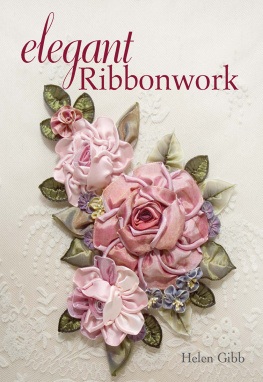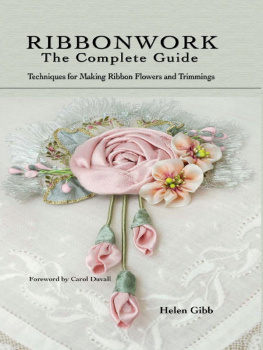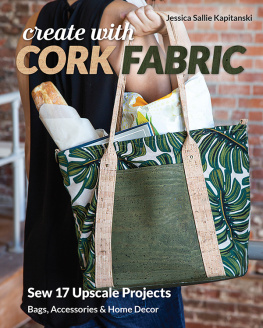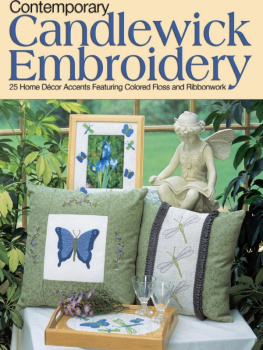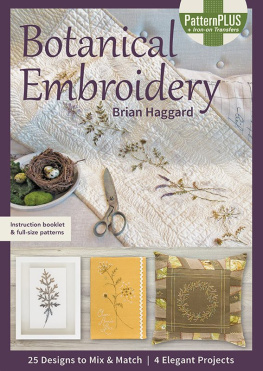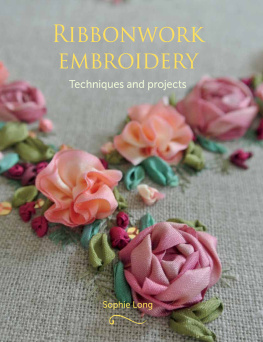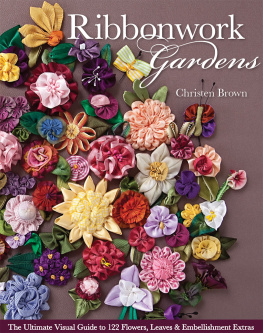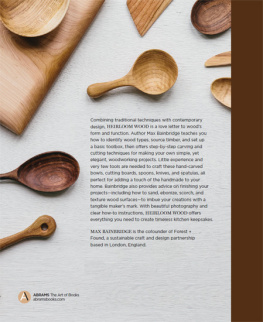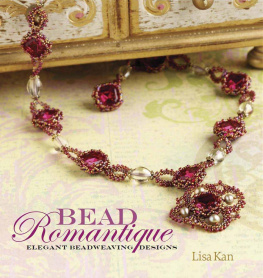elegant
Ribbon work

Helen Gibb
2006 Helen Gibb
Published by
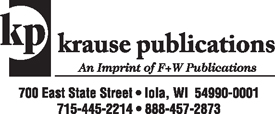
Our toll-free number to place an order or obtain a free catalog is (800) 258-0929.
All rights reserved. No portion of this publication may be reproduced or transmitted in any form or by any means, electronic or mechanical, including photocopy, recording, or any information storage and retrieval system, without permission in writing from the publisher, except by a reviewer who may quote brief passages in a critical article or review to be printed in a magazine or newspaper, or electronically transmitted on radio, television, or the Internet.
Techniques, designs and projects, copyright 2006 Helen Gibb. All rights reserved.
Projects and designs may be reproduced for personal use only. Any commercial use of these designs,
in any form or manner, is strictly prohibited, unless permission from the author is granted.
A note about the cover photo:
Ribbon roses, blossoms, rosettes and leaves are made
using a variety of vintage ribbonwork techniques.
The following registered trademark terms and companies appear in this publication:
Ultrasuede, Aleenes Tacky Glue, E-6000 and Velcro.
Library of Congress Catalog Number: 2006929410
ISBN 13-digit: 978-0-89689-310-8
ISBN 10-digit: 0-89689-310-3
eISBN 13: 978-1-4403-1549-7
Edited by Susan Sliwicki
Designed by Heidi Bittner-Zastrow
Photographs by Brandon Wade
Illustrations by Karen Wallach and Helen Gibb
Printed in China
Credits
Heartfelt thanks to all of the people involved with this book, in particular:
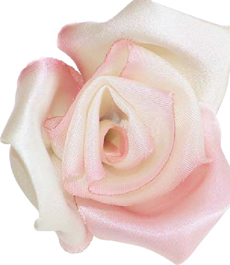
Brandon Wade, for the beautiful photographs; my editor, Susan Sliwicki, who fixed my errors and graciously allowed a deadline extension; Beth Hill, for her wonderful half dolls; Brooke Exley of Hanah Silk, for supporting my work and for making available to me the beautiful bias-cut silk ribbons; Marge Boyle at Quilters Resource Inc., who keeps us all supplied with French ribbons and notions for ribbonwork; Renaissance Ribbons, which continues to bring us beautiful French ribbons and trims; and Mokuba, which makes many of the scrumptious ribbons used in several of the projects in this book.
Thanks to Valarie Beers, for the use of two bridal photos.
Thanks also go to Mary Frances Dreyer and Candace Fouts at the Fuzzy Antler,
for allowing us to photograph a few of the projects in their beautiful shop.
Special thanks to Cynthia Anaya, Elaine Brunjes, Peter and Nola Ford, Sue Ford, Diane Fugit, Anita Gibb, Jenny Hawkins, Jenni Hlawatsch, Joyce Hoffsetz, Irene Johnson, Mary Jo Manes,
Liz Morath and Linda Murdoch.
Loving thanks to my husband, Jim, who once again has endured my book writing ups and downs;
and to my daughter, Melinda, for being the perfect 1920s model. I love you both.
Dedication
To my daughter, Melinda.
You are such a creative
and talented woman.
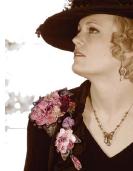
Table of Contents
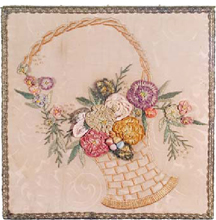
Chapter 1
A Window to the Past
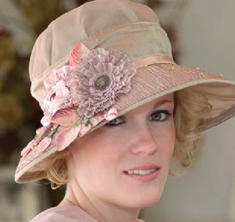
Chapter 2
Before You Begin
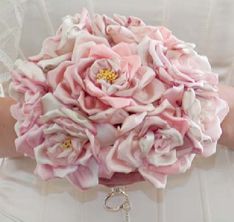
Chapter 3
Ribbon work for Weddings
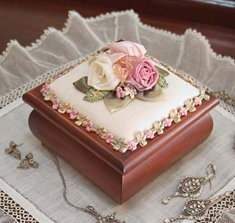
Chapter 4
Ribbon work for Fashionable Occasions
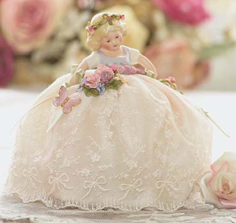
Chapter 5
More Elegant Ribbon work
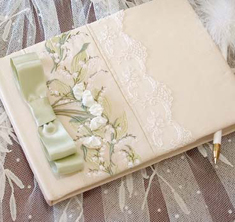
Chapter 6
Techniques Guide
A Note from the Author

The addition of ribbons, trims and dainty ribbon flowers to embellish many beautiful garments and decorative items is timeless. Ribbon work from the 1920s has been especially inspiring for me, and it is from these vintage treasures boxes, dresses, hats and half dolls that I have adapted and created the embellishments for new projects such as the ones found in this book. Some of these items include wedding gowns, scarves, jackets, hats, anniversary albums, brooches, bracelets, tassels and more.
As you look through the pages of this book, youll notice that all but one of the projects incorporate ribbon roses, the most classical and beautiful of all ribbonwork flowers. I should have named the book The Ultimate Ribbon Rose Project Book! While some of my tried and true ribbon roses are used in new ways in the projects, there are several new rose techniques that have never been published before. These new roses grace the cover of the book, as well as a brooch, a lampshade and an opera jacket. I think you will enjoy making and using these new roses on your projects.
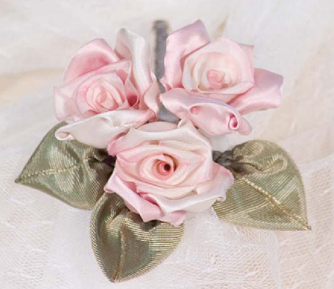
Three small ribbon roses and leaves are combined together to make a corsage for use on a jacket lapel.

Large silk satin rose from a boudoir pillow. Circa 1930.
The projects in the book are arranged in three sections wedding, special occasion, and delightful miscellany. While some of the projects seem specific for example, wedding be open-minded about the use of the flowers. You might find that the roses used in the wedding bouquet might look equally beautiful in another color and used on a pillow or a hat box!
The projects range in skill levels from easy to more challenging, with everything quite achievable once you have an understanding of the techniques. Be sure to take the time to read about the special supplies needed for ribbonwork, the tips in getting started, and in particular, the ribbon techniques. Once you are ready to begin the projects, youll notice that each project in the book gives you a supply list and steps to complete the project. Youll also notice that the steps give the basic flower methods and then refer you back to Chapter 6 Techniques Guide for instructions on making the actual flower components.
Next page
